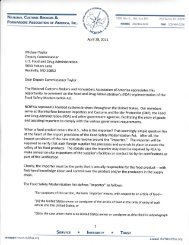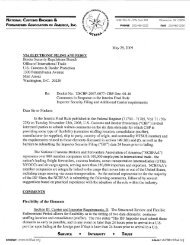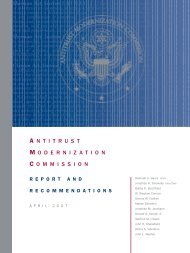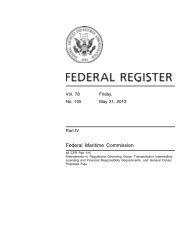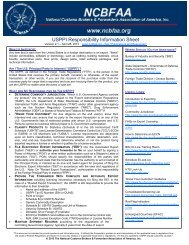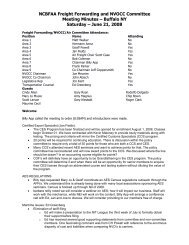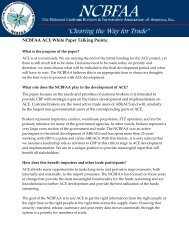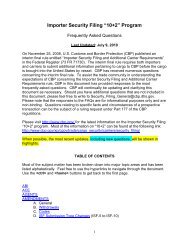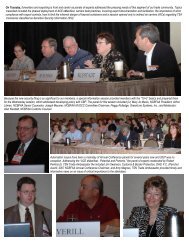Customs Committee Agenda for 4/5/07 Meeting - ncbfaa
Customs Committee Agenda for 4/5/07 Meeting - ncbfaa
Customs Committee Agenda for 4/5/07 Meeting - ncbfaa
Create successful ePaper yourself
Turn your PDF publications into a flip-book with our unique Google optimized e-Paper software.
<strong>07</strong>0222 v.1.0<br />
in facilitating the efficient clearance of goods, and the criticality of that function immediately<br />
following an federally declared emergency, the <strong>Customs</strong> <strong>Committee</strong> believes it is obliged to<br />
bring this agenda item to the Assistant Commissioner’s attention. There are four essential parts<br />
to this provision (See Attachment “C”):<br />
1. The rule comes into effect only on declaration of an emergency in the affected area by the<br />
federal government, applies only to those customs brokers having a permit in the affected area,<br />
and expires at the discretion of the CBP Commissioner.<br />
2. The provision authorizes the CBP Commissioner to grant a temporary permit in another<br />
district to which the customs broker has been <strong>for</strong>ced to relocate their place of business because of<br />
the emergency.<br />
3. The temporary permit will authorize the relocated customs broker to clear cargo <strong>for</strong><br />
customers pre-existing the emergency if the cargo arrives at ports in the same district as the<br />
affected area or in other ports at which cargo arrives when diverted from the affected area.<br />
4. The revocation of the temporary permit will be without prejudice and the customs broker<br />
will be allowed to conclude all transactions begun while the temporary permit was in <strong>for</strong>ce.<br />
16:00 – EIP RLF Actual Use Merchandise<br />
The <strong>Customs</strong> <strong>Committee</strong> considered whether the rationale given by CBP to explain its<br />
exclusion of actual use merchandise from the RLF prototype is consistent with regulatory<br />
provisions.<br />
§ 10.134 Declaration of intent. – "A showing of intent by the importer as to the actual use of<br />
imported merchandise shall be made by filing with the entry <strong>for</strong> consumption or <strong>for</strong> warehouse a<br />
declaration as to the intended use of the merchandise, or by entering the proper subheading of an<br />
actual use provision of the Harmonized Tariff Schedule of the United States (HTSUS) and the<br />
reduced or free rate of duty on the entry <strong>for</strong>m. Entry made under an actual use provision of the<br />
HTSUS may be construed as a declaration that the merchandise is entered to be used <strong>for</strong> the<br />
purpose stated in the HTSUS, provided the port director is satisfied the merchandise will be so<br />
used. However, the port director shall require a written declaration to be filed if he is not<br />
satisfied that merchandise entered under an actual use provision will be used <strong>for</strong> the purposes<br />
stated in the HTSUS." In the presumably very small number of cases when the final clause of 19<br />
CFR 10.134 is applicable, the Port Director could issue a CBP Form 28.<br />
The <strong>Committee</strong> concluded that CBP’s claim that there is a paper document required at entry<br />
is contrary to the plain language of the governing regulation. The <strong>Customs</strong> <strong>Committee</strong> would<br />
like to revisit this matter with CBP at this meeting.<br />
Blue headings indicate OLD BUSINESS<br />
Green headings indicate NEW BUSINES<br />
16:30 – Adjourn<br />
Page 5 of 17



